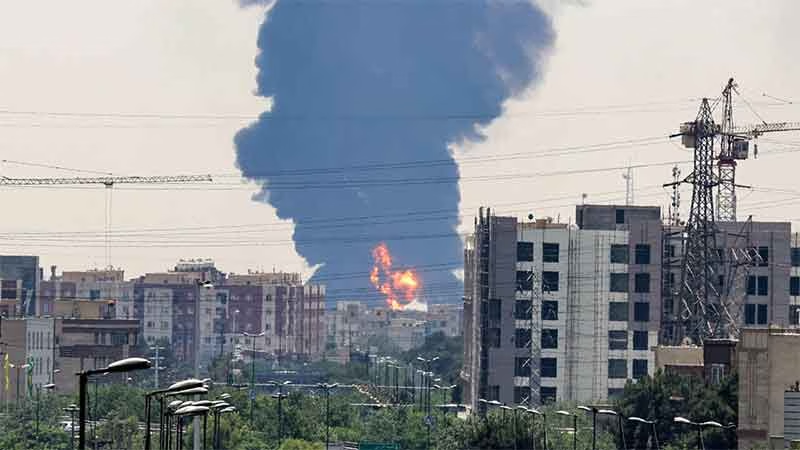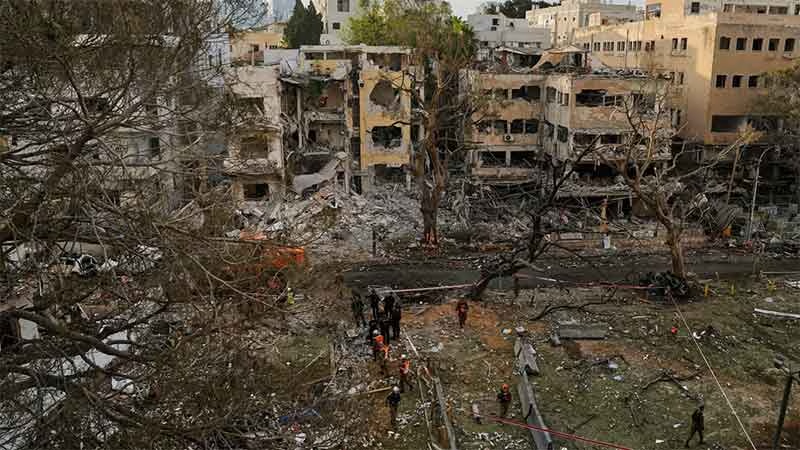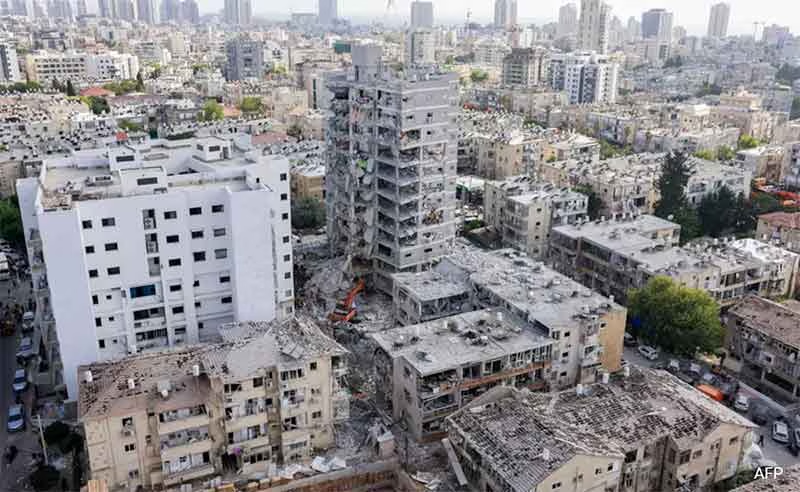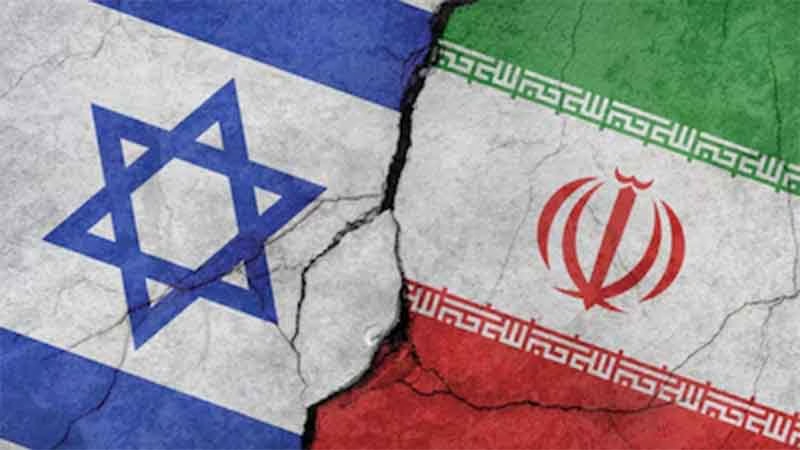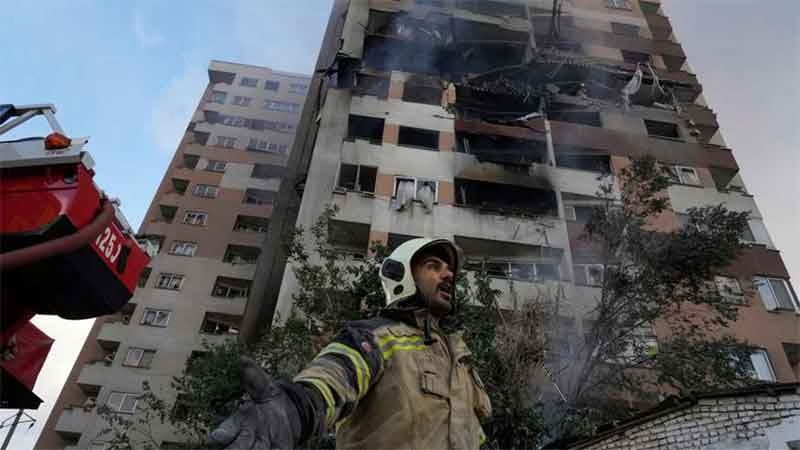
Sunday morning, I flew to McAllen, Texas to find out what’s really happening to immigrant families ripped apart by the Trump administration.
There’s one thing that’s very clear: The crisis at our border isn’t over.
I went straight from the airport to the McAllen Customs and Border Protection (CBP) processing center that is the epicenter of Donald Trump’s so-called “zero-tolerance” policy. This is where border patrol brings undocumented migrants for intake before they are either released, deported, turned over to Immigration and Customs Enforcement (ICE), or, in the case of unaccompanied or separated children, placed in the custody of Health and Human Services.
From the outside, the CBP processing center looks like any other warehouse on a commercial street lined with warehouses. There’s no clue about the horrors inside.
Before we could get in, CBP insisted we had to watch a government propaganda video. There’s no other way to describe it – it’s like a movie trailer. It was full of dramatic narration about the “illegals” crossing our border, complete with gory pictures about the threats that these immigrants bring to the United States, from gangs to skin rashes. The star of the show is CBP, which, according to the video, has done a great job driving down the numbers.
Then an employee described what we were about to see. “They have separate pods. I’ll call them pods. I don’t really know how they name them.” Clearly they had gotten the memo not to call them what they are: cages. Every question I asked them had a complicated answer that led to two more questions – even the simple question about how long people were held there. “Nobody is here longer than 24 hours.” “Well, maybe 24-48 hours.” “72 hours max.” And “no children are separated out.” “Well, except older children.”
The warehouse is enormous, with a solid concrete floor and a high roof. It is filled with cages. Cages for men. Cages for women. Cages for mamas with babies. Cages for girls. Cages for boys.
The stench – body odor and fear – hits the second the door is opened. The first cages are full of men. The chain link is about 12-15 feet high, and the men are tightly packed. I don’t think they could all lie down at the same time. There’s a toilet at the back of the cage behind a half-wall, but no place to shower or wash up. One man kept shouting, “A shower, please. Just a shower.”
I asked the men held in cage after cage where they were from. Nearly all of them were from El Salvador, Guatemala, or Honduras.
Then I asked them how long they had been there – and the answers were all over the map, from a few days to nearly two weeks (72 hours max?). The CBP agents rushed to correct the detained men, claiming that their answers couldn’t be right. My immigration specialist on the trip who speaks fluent Spanish made sure the men understood that the question was, “How long have you been in the building?” Their answers didn’t change.
Cage after cage. Same questions, same answers.
Next we came into the area where the children were held. These cages were bigger with far more people. In the center of the cage, there’s a freestanding guard tower probably a story or story-and-a-half taller to look down over the children. The girls are held separately in their own large cage. The children told us that they had come to the United States with family and didn’t know where they had been taken. Eleven years old. Twelve. Locked in a cage with strangers. Many hadn’t talked to their mothers or fathers. They didn’t know where they were or what would happen to them next.
The children were quiet. Early afternoon, and they just sat. Some were on thin mats with foil blankets pulled over their heads. They had nothing – no books, no toys, no games. They looked shell shocked.
And then there were the large cages with women and small children. Women breast-feeding their young children.
When we went over to the mamas with babies, I asked them about why they had left their home countries. One young mother had a 4-year-old child. She said she had been threatened by the gangs in El Salvador. She had given a drink of water to a police officer, and the gang decided she must be in with the police. The longer she spoke, the more agitated she got – that she would never do that, that she understood the risk with the gangs, but that the gangs believed she did it. She sold everything she had and fled with her son to the United States.
One thing you won’t see much of in the CBP processing center? Fathers caged with their children. After pressing the CBP agents, they explained that men traveling with children are automatically released from the facility. They just don’t have the cages there to hold them. Women with small children, on the other hand, could be detained indefinitely. I pressed them on this again and again. The only answer: they claimed to be protecting “the safety of the mother and children.”
CBP said that fathers with children, pregnant women, mothers of children with special needs, and other “lucky ones” who are released from the processing center are sent over to Catholic Charities’ Humanitarian Respite Center for help. That was my next stop in McAllen. Sister Norma, her staff, and volunteers are truly doing God’s work. Catholic Charities provides food, a shower, clean clothes, and medicine to those who need it. The center tries to explain the complicated process to the people, and the volunteers help them get on a bus to a family member in the United States.
Sister Norma introduced me to a father and his teenage son from Honduras. The father said that a gang had been after his son, determined that the boy would join the gang. The only way for the boy to escape was to run. The man left his wife and four daughters in Honduras to bring his son to the United States. His only plan is to find work here to send money home to his family. His cousin lives in New Jersey, so CBP sent their paperwork to the local ICE center in New Jersey, and they would soon begin the long bus ride there.
Catholic Charities of the Rio Grande Valley provides a lifesaving service to people of all faiths and backgrounds, but with a humanitarian crisis in their backyard, they’re clearly stretched as thin as it gets. With more money and volunteers, they would gladly help more people.
I asked Sister Norma about the women and babies who were in indefinite detention. She said her group would open their arms and take care of them, get them cleaned up and fed and on a bus to a family member – if only ICE would release them.
“This is a moral issue. We are all part of this human family,” they say.
Next, I met with some of the legal experts on the frontlines of this crisis – lawyers from the Texas Civil Rights Project, the Border Rights Center of the Texas ACLU, and the federal public defenders.
I gave them a rundown of everything I’d seen so far in McAllen, particularly when it comes to reuniting parents and children, and they raised some of my worst fears:
- The Trump administration may be “reunifying” families, but their definition of a family is only a parent and a child. If, for example, a 9-year-old crosses with an 18-year-old sister – or an aunt or uncle, or a grandparent, or anyone who isn’t the child’s documented legal guardian – they are not counted as a family and they will be separated.
- Mothers and children may be considered “together” if they’re held in the same gigantic facility, even if they’re locked in separate cages with no access to one another. (In the world of CBP and ICE, that’s how the 10-year-old girls locked in a giant cage are “not separated” from their mothers who are in cages elsewhere in the facility.)
- In the process of “reunifying” families, the government may possibly count a family as reunited by sending the child to a distant relative they’ve never met – not their parents. Some relatives may be unwilling to claim these children because it would be inviting ICE to investigate their own families.
- Parents are so desperate to be reunited with their children that they may be trading in their legal right to asylum.
- The system for tracking separated families is virtually unknown, if one exists at all. One expert worries that for some families, just a simple photo may be all the documentation that the Department of Homeland Security and Department of Health and Human Services have to reunite them. (I sincerely hope that’s not true.)
The longer the day went on, the more questions I had about how the Trump administration plans to fix the crisis they’ve created at the border. So my last stop of the day was at the Port Isabel Detention Center, about an hour east of McAllen. It’s one of the largest detention facilities in Texas.
The Department of Homeland Security had released some details on its plan to reunify families. The release noted that Port Isabel will be the “primary family reunification and removal center for adults in their custody.”
Let’s be clear: Port Isabel isn’t a reunification center. It’s a detention center. A prison.
There’s no ambiguity on this point. I met with the head of the facility. He said several times that they had no space for children, no way to care for them, and no plans to bring any children to his locked-down complex. When I pressed on what was the plan for reunification of children with their parents, he speculated that HHS (the Department of Health and Human Services) would take the children somewhere, but it certainly wasn’t going to be to his facility. When I asked how long HHS would take, he speculated that it would be weeks, but he said that was up to them. He had his job to do: He would hold these mothers and fathers until he received orders to send them somewhere else. Period.
So let me say it again. This is a prison – not a reunification center.
We toured the center. It is huge – multiple buildings isolated on a sun-baked expanse of land far from any town. We didn’t go to the men’s area, but the women are held in a large bunk-bed facility with a concrete outdoor exercise area. It’s locked, double-locked, and triple locked. Tall fences topped with razor wire are everywhere, each backed up by a second row of fences also topped with razor wire.
An ICE official brought in a group of nine detained mothers who had volunteered to speak to us. I don’t believe that ICE cherry-picked these women for the meeting, because everything they told me was horrifying.
Each mother told us her own story about crossing the border, being taken to a processing center, and the point that they were separated from their child or children. In every case, the government had lied to them about where their children were being taken. In every case, save one, no mother had spoken to her child in the days since the separation. And in every case, no mother knew where her child was.
At the time of separation, most of the mothers were told their children would be back. One woman had been held at “the icebox,” a center that has earned its nickname for being extremely cold. When the agent came to take her child, she was told that it was just too cold for the child in the center, and that they were just going to keep the child warm until she was transferred. That was mid-June. She hasn’t seen her child since.
One mother had been detained with her child. They were sleeping together on the floor of one of the cages, when, at 3:00am, the guards took her away. She last saw her 7-year-old son sleeping on the floor. She cried over and over, “I never got to say goodbye. I never got to say goodbye.” That was early-June, and she hasn’t seen him since.
Even though the CBP officials at the processing center told me that mothers with children that have special needs would be released, one of the mothers I spoke with had been separated from her special needs child. She talked about her child who doesn’t have properly formed legs and feet and walks with great difficulty. One of the mothers spoke of another mother in the facility who is very worried because her separated child is deaf and doesn’t speak at all.
The women I met were traumatized, weeping, and begging for help. They don’t understand what is happening to them – and they’re begging to be reunited with their kids.
Detainees can pay to make phone calls, but all of their possessions are taken from them at the processing center. The only way they can get money for a call is for someone to put money on their accounts. I asked if people or charities could donate money so that they’d be able to make phone calls to their family or lawyers, but they said no – a donor would need the individual ID number for every person detained at the center, and ICE obviously isn’t going to release that information.
Three young lawyers were at Port Isabel at the same time we were. The lawyers told us that their clients – the people they’ve spoken to in the detention center – have strong and credible cases for asylum. But the entire process for being granted asylum depends on one phone call with an immigration official where they make the case for why they should be allowed to stay. One of the first questions a mother will be asked is, “Have you been separated from a child?” For some of the women, just asking that question makes them fall apart and weep.
The lawyers are worried that these women are in such a fragile and fractured state, they’re in no shape to make the kind of detailed, credible case needed for themselves or their children. They had no chance in our system because they’ve lost their children and desperately want them back.
We stayed inside at Port Isabel for more than two hours – much longer than the 45 minutes we had been promised. When I finally went to bed that night, I thought about something the mothers had told me – something that will likely haunt me for a long time.
The mothers say that they can hear babies cry at night.
This isn’t about politics. This isn’t about Democrats or Republicans. This is about human beings. Children held in cages today. Babies scattered all over this country. And mamas who, in the dark of night, hear them cry.
I’m still working through everything I saw, but I wanted you to know the full story. The fight for these children and families isn’t over – not by a long shot.
Thanks for being a part of this,
Elizabeth Warren is a Senator from MA, USA




























